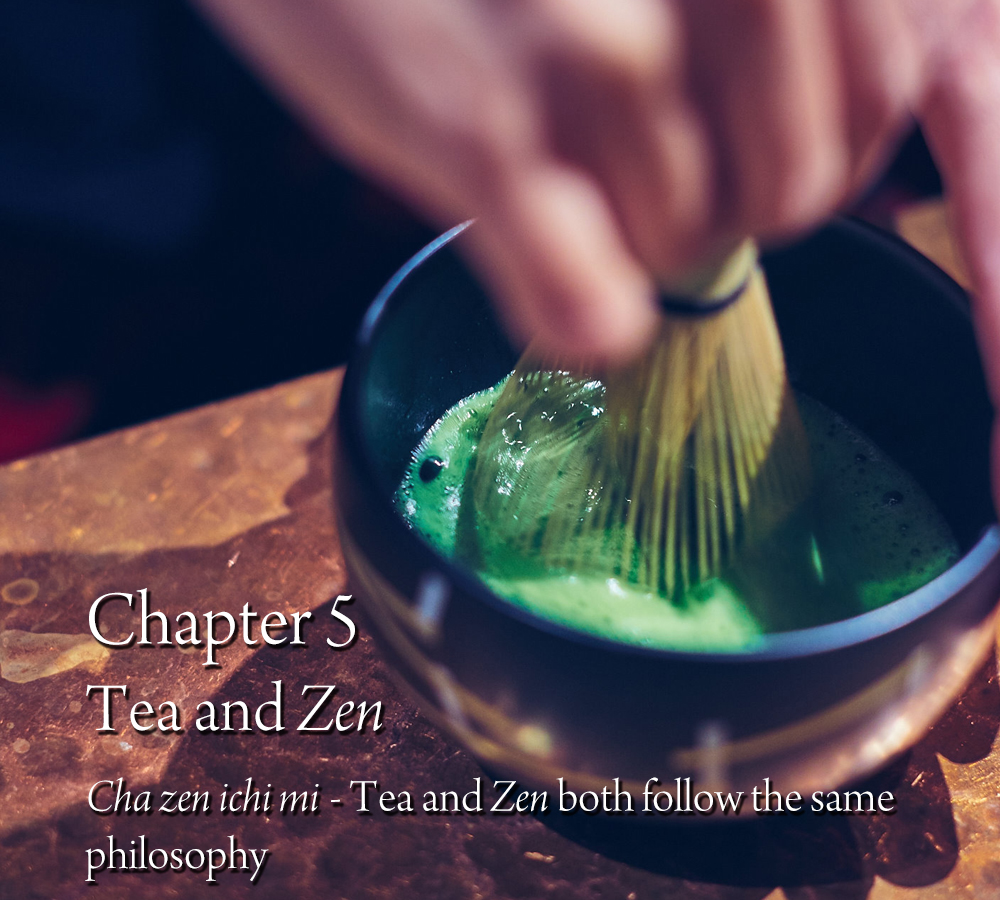In Japan, the Chinese character DO is used to describe cultural arts like Kado (flower arrangement), Shodo (calligraphy), or Judo (Japanese art of self-defense) that we normally spend a long time mastering. The Chinese character DO represents a process that you not only learn the technique through but also discipline your mind with. Did you know that green tea is not only for drinking but also has a cultural aspect called Sado (tea ceremony)? More than 1,000 years ago, Japanese monks brought back black tea leaves into Japan from China. After 500 years, these monks introduced Sado or the tea ceremony in Japan. In the beginning, the tea ceremony was something only the aristocracy could enjoy but later it became more accessible to the general public, especially after Sennorikyu established the concept of Wabicha.
Later Sado came to imply “hospitality” summarized in a wise saying, Ichigo ichie. That is the concept of treating people with respect, preparing a cup of tea for them and entertaining them from your heart, and telling them to take it easy. That is the essence of Sado and a spirit Japanese people share. The philosophy of Sado - calming yourself and respecting manners - is related to the Zen concept of Buddhism. There is even a word - Chazen ittai - to describe the fact that the tea ceremony and Zen are united. Japanese people have Chakai or tea ceremony parties where they can learn about such philosophy by enjoying Matcha.
